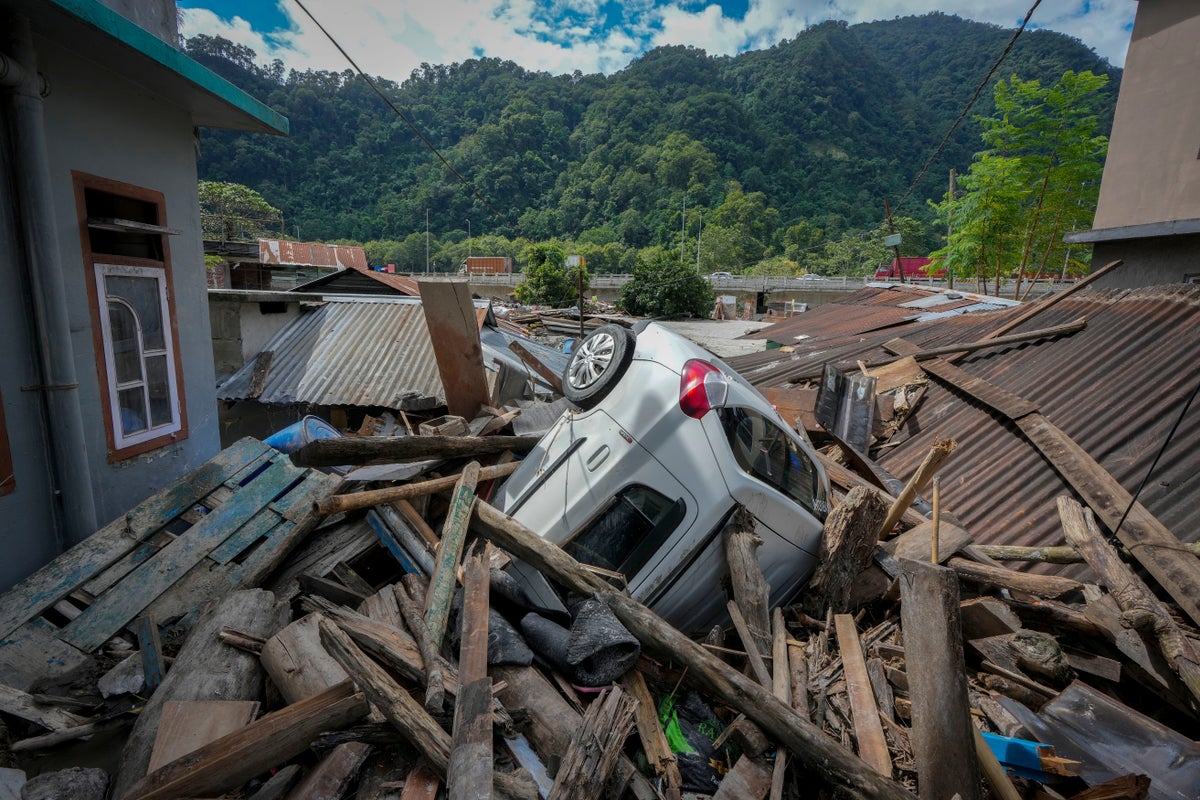
Air force helicopters were able to land Monday to rescue people in India's Himalayan northeast after a 6-year-old hydroelectric dam cracked open last week in intense rain, flooding a valley with glacial lake water and washing away bridges and homes as thousands fled.
Police said rescuers have found 52 bodies so far, and the search was continuing while around a 100 people are still missing. As weather conditions improved in Sikkim state, helicopters arrived in the worst-hit Mangan district to help some 3,000 stranded tourists.
The design and placement of the Teesta 3 dam, the biggest hydroelectric dam in Sikkim state, were controversial from the time it was built. A 2019 report identified Lhonak Lake as “highly vulnerable” to flooding that could breach dams and cause extensive damage.
It wasn’t clear what triggered the deadly flood that began early Wednesday, the latest to hit northeast India in a year of unusually heavy monsoon rains. Experts say possible contributors were the intense rain and a 6.2-magnitude earthquake that struck neighboring Nepal on Tuesday afternoon.
The flood began when the glacial lake overflowed, cracking open the Teesta 3 dam. The icy waters then cascaded through towns in the valley below, carrying some bodies kilometers (miles) downstream, where they were found in the neighboring state of West Bengal and in Bangladesh.
On Sunday evening, as the skies cleared and rains subsided, 89 tourists stranded by washed-out roads were airlifted out of northern Sikkim. Some 10 tourists, including five Thai nationals, were able to trek to safety with assistance from rescuers. Police said Monday they would continue to fly the helicopters if the weather permits.
The flood destroyed multiple bridges, hit pipelines and damaged hundreds of houses in northern Sikkim. Of 23 Indian soldiers reported missing earlier, officials say one was rescued and nine were confirmed to have died, while the search for the others continued.
There is no land access or mobile connectivity in the area, complicating rescue efforts and sharing of information. Thousands of people are sheltering in relief camps set up by the state.
Experts say the flooding disaster underscores a climate dilemma that pits local environmental activists who believe dams in the Himalayas are too dangerous against Indian authorities pursuing green energy agenda.
Despite risks to dams due to the increasing frequency of extreme weather, the Indian federal government aims to increase India’s hydroelectric dam output by half, to 70,000 megawatts, by 2030.
Several towns, including Dikchu and Rangpo in the Teesta basin, were flooded.
Rangpo resident Muhammad Karim has been searching for his father, brother and sister-in-law for five days. “I am clueless. … I have asked the police for help, but there’s been no progress so far,” he said.
Homes and buildings in the town were covered by mud as excavators dug through debris to recover bodies over the weekend.
Disasters caused by landslides and floods are common in India’s Himalayan region during the June-September monsoon season. Scientists say they are becoming more frequent as global warming contributes to the melting of glaciers there.
Himalayan glaciers could lose 80% of their volume if global warming isn’t controlled, according to a report from the International Center for Integrated Mountain Development.
___
Hussain reported from Gauhati, India.







